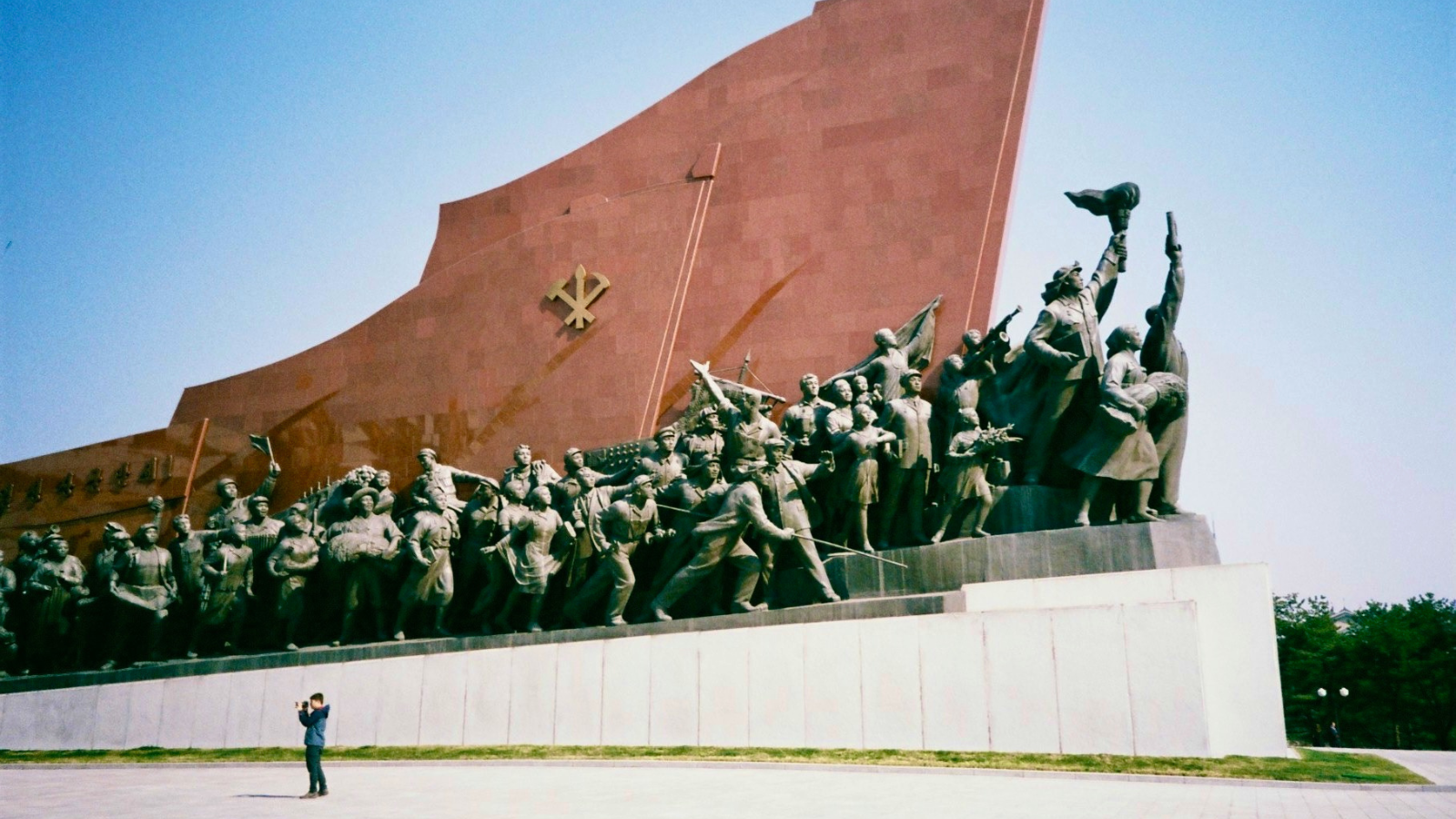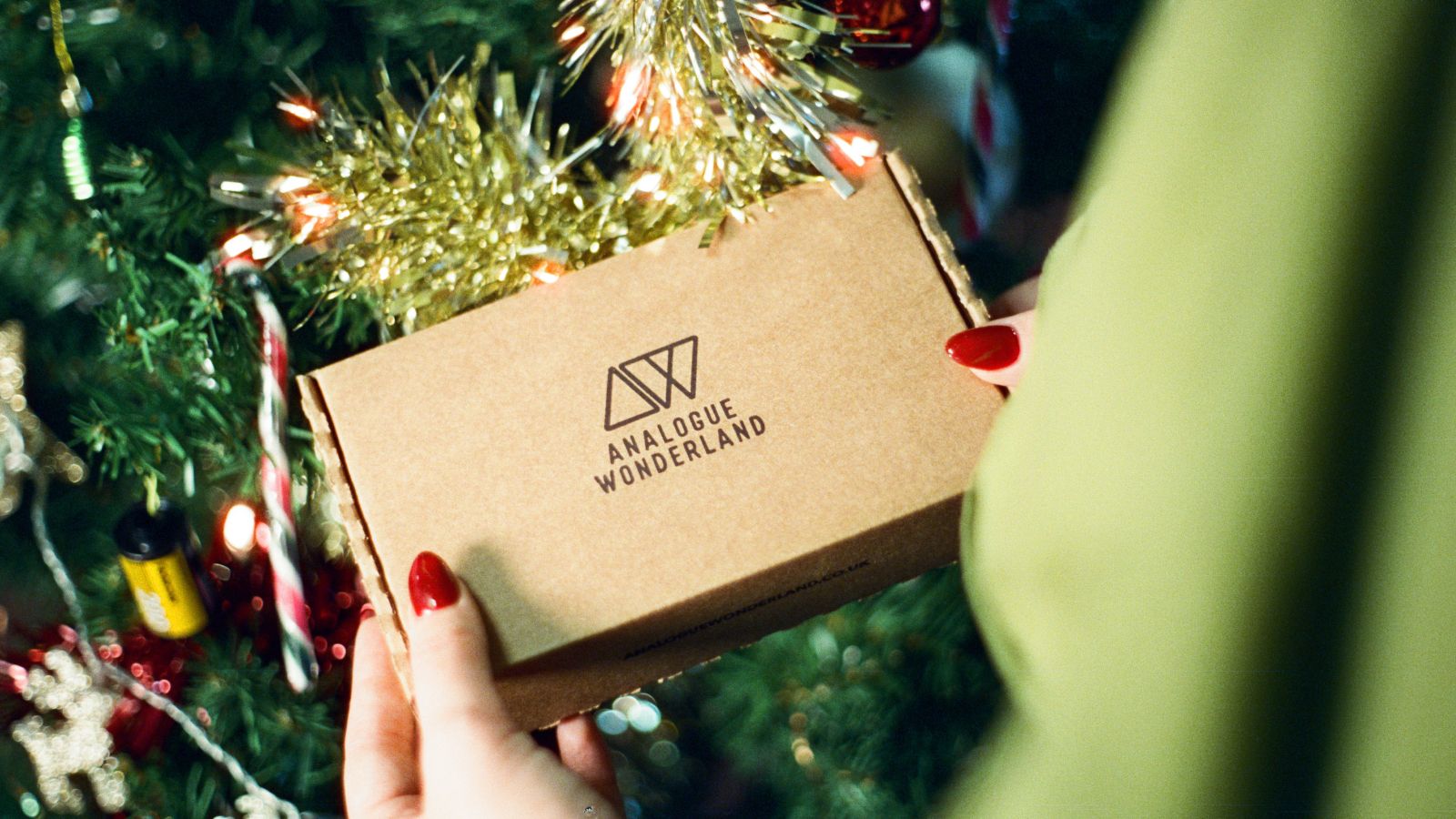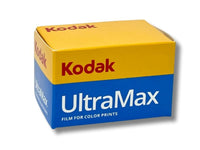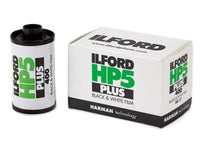Black Friday 2025 has landed at Analogue Wonderland, bringing some of our biggest film photography deals of the year - from discounted film and cameras to money-saving WonderLab processing offers, exclusive bundles, and festive specials available for a limited time only. Grab a great deal while stocks last!
Recent posts
Shop the article

Shooting Film in North Korea: Firsthand Experience
By Paul McKay
I traveled to North Korea in April 2016 to take photos and run a half marathon. With tourism to the country set to make a reappearance for the first time since COVID struck, it seems a good moment to reflect on the trip and share some of my photos. I’m well aware that travelling to North Korea from any country other than China is unusual, so I hope that you enjoy learning about the experience and seeing some rare images!

Overlooking the Taedong river (c) Paul McKay
Also note that throughout the article I’ll sometimes refer to the country as DPRK (Democratic People's Republic of Korea - the official name of the country) as well as the colloquial North Korea. I shot most photos on Fujifilm Superia 35mm, Kodak Ultramax 400 and black-and-white Ilford HP5 35mm. I needed to rely on some of the best 35mm films to capture the moments as they happened!
Early Disclaimer
This article will not discuss the political or social background of North Korea, the nuclear programme, the human rights abuses, the rights/wrongs of the Korean war or any of the other big topics that you will have heard from in relation to the secretive country that is DPRK. You can read why in an ‘ethics’ section at the bottom of this piece.
How do you travel to North Korea?
Like all the best plans, this one began in a pub. My film friend Luke had recently begun running marathons as a hobby, with a particular interest in unique events and locations. While we were chatting over a drink he received a text from someone in his running club with a link to the Pyongyang Marathon and we agreed that - in theory - travelling to North Korea would make for an epic photography adventure.

We weren't wrong! Shot on mobile phone
One week later we met again, admitted that we’d both been thinking about it ever since, and wanted to make it happen! After sense checking the plans with our partners (general feedback: “um ok? But please don’t do anything daft”) we started to research the logistics.
The paperwork of visiting North Korea
Unsurprisingly, DPRK is not a straightforward tourist destination. You cannot head to Skyscanner to compare flights to North Korea! In order to enter the country you must be escorted by an authorised external tourist agency based in China. There are a few of these agencies but the most prestigious - and the one that’s been doing it the longest - is Koryo Tours. (You might have seen a Michael Palin 2018 documentary about visiting DPRK: he also went with Koryo Tours, and visited many of the same places that we’d seen two years prior.)
So the first step is to book on one of their set tours. These have fixed itineraries, dates, locations, for reasons that will become obvious - and for us it was an easy choice as we wanted to incorporate the Pyongyang Marathon.
Once we’d jumped through the hoops to transfer money to Koryo Tours (HSBC proved reluctant to process the payment to a Chinese company with links to North Korea) we were then given dates to be in Beijing, where the tour would officially start and end.

A classroom in North Korea (c) Paul McKay
At some point during this process one of our other friends - Kate - decided that she’d like to join, and she jumped straight into the booking!
Tour confirmed, flights to Beijing purchased, and we had the basics of the trip sorted!
The rules on taking photos in North Korea
As a happily obsessive film photographer, the next thing on my mind after booking flights was which cameras to take? Whenever you are travelling you have to make the decision based on likely photography situations - pack a telephoto lens for safari, don’t take delicate equipment into a rainforest, that kind of thing. You also have to think about how best to travel with film.
The added complexity with visiting DPRK is that there are some extra security rules and guidelines that need to be understood. Fortunately they are much easier to follow than most people expect:
- You are not allowed to take photos of any security forces - army, police, border guards. To be honest this is no different to many other countries in the world, so pretty easy to manage!
- You must not take any photos that show disrespect to the Supreme Leaders past or present. In practice this means that if there is a photo or statue of Kim Jong Un, Kim Jong Il or Kim Il Sung then you should ensure that you don’t cut off their heads in the framing of a photo, or include anything else in the photo that might imply disrespect (someone grinning or pulling a face in the foreground, a dog going to the toilet in a bush, double-exposure or in-camera tricks to make it look like the statues were falling over or backwards). Again, this is pretty straightforward and it was always pretty clear when we were expected to be on best behaviour. There are similar rules in other countries (Lèse-majesté in Thailand) - the easiest way to understand this in practice is to think of the cultural worship of Supreme Leaders as a form of religion. You don’t need to understand or agree with it, but you can respect the people who are asking you to follow their rules in their country.

A 'permitted' crop of the statues of Kim Jong Il and Kim Il Sung (c) Paul McKay
- You are not allowed to take photos of any construction work happening in the country. This one is a bit more unusual, and from what I could gather it’s linked to a cultural shame of allowing visitors to see something ‘unfinished’ or ‘messy’. I’d imagine there is also a political rationale - controlling the image of the country in the wider world. Especially when only a few photos will come from tourists in any one year, the government would be keen that those photos are as aesthetically pleasing as possible.
- You must ask permission before taking close-up photos of anyone you meet. Again this feels like a fairly normal rule for being a polite human being - and while there are many street photographers who might protest at this - personally I have no issue with asking for consent from my photographic subjects.

A DPRK Army General looking over the DMZ towards South Korea. Yes I got explicit permission before taking this shot! (c) Paul McKay
So the rules themselves are clear and easy to follow, but it’s worth noting that the penalty for breaking the rules in North Korea as a tourist can be exceptionally severe. So I chose not to take any cameras that could be intimidating: no long lenses, no professional bodies, nothing that might spark concerns from the security forces. Instead I went with cameras that are deliberately unthreatening - the Lomo LC-A+ and a Fujifilm Instax camera. The LC-A+ is based on a classic model from Soviet Russia which you’ll appreciate makes it a very appropriate choice for a North Korea adventure!
Both cameras are also robust, compact, and reliable - which make them fantastic travel companions on any trip.
How does a North Korea tourist trip work?
There were several groups going into North Korea for the 2016 marathon. Each group that flies into the country is limited to 20 people (the amount that can comfortably fit on the minibuses used to ferry tourists about). Each group is also accompanied by one representative from Koryo Tours, and two representatives from the DPRK Tourism Board that join you the moment you land in Pyongyang.
You are taken from place to place on the bus, with regular opportunities to get out for typical tourist activities: lunch at a restaurant, photo opportunity at a scenic hotspot, walk through a beautiful park, visit a museum, watch a show. Those opportunities are part of the itinerary you booked so there are few surprises, but you can usually expect one or two adjustments for weather or operational hiccups, as the guides work tirelessly to provide the best possible experience on each day.

North Korean children at play - on one our walks through a Pyongyang city park (c) Paul McKay
What did we see in North Korea?
I have become increasingly frustrated with the popular one-dimensional view of North Korea that portrays the entire population of the country as a backdrop for political commentary.
The truth is that the North Korea we saw is a beautiful country with some incredible architecture, fascinating and varied individuals, an incredibly complex relationship with the government and the rest of the world, and a whole load of people going about their lives. Which seems like a strange point to make - totally obvious in retrospect - but surprisingly missing from most accounts of journeys there.
Now, to be clear: we were taken from place to place - always with our two North Korean minders and our representative from Koryo Tours - and we were always on a tight set agenda. We were not allowed to wander away from the group, we took all our meals together three times a day. Basically a school trip but with beer.

A North Korean drummer in a music lesson - you can see my full tour group reflected in the mirror behind the young musician (c) Paul McKay
We were only taken to see the places that their tourism board wanted us to see, and all those stops were tightly stage-managed - but I also don’t think it’s fair to say that we saw a “false” view of North Korea. We were there for a full week. Driving round Pyongyang and then out of the city into the countryside for 4-5 hrs - all the way to the coast on the west and down to the DMZ. And it would have been impossible to “Truman Show” the entire country for that week and the literal thousands of people we drove past.
So we saw a lot of real people going about their real lives - we saw teenagers walking in the park hand-in-hand, we saw people hurrying through the city on the way to work, we saw toddlers trying to run away from their parents (who in turn looked harassed and stressed - a true universal experience!) And that’s where my pictures come from. Trying to show the stories and lives of the real people I met and real events that happened.

North Korean worker painting a bridge that runs over the smaller Pothong River in Pyongyang (c) Paul McKay
If there’s one thing that I hope you walk away from my images thinking is “I wasn’t expecting it to look like that” because that’s how I felt when reviewing my photos for the first time after the trip.
My biggest surprises from North Korea
The entire trip subverted my expectations. And in hindsight I’m ashamed of how much of this subversion came from my own ignorance and my unconscious acceptance of the common narrative about North Korea, which I now recognise as heavily couched in racism and colonialism.
Just to be clear - I’m not a DPRK-apologist. I believe that the crimes that North Korean officials have committed against their own population are devastating and criminal. But I also don’t believe that this is the only fact relevant to the people who live in the country, and to reduce 26m people to a single story that invites Western superiority is uncomfortable in the extreme.
So let’s talk about some of my expectations and how they were challenged.

We got to watch a football match - photo above! Between the Army and the Government teams (no jokes to be made there…) If I thought about it I might have expected to see respect for the officials, and this was the cleanest football match I’ve ever seen in my life. But I didn’t expect the stadium to be so big (150,000-seater), the quality of the sport to be so good, or the good-humoured laughter and applause from the crowd as the match played out.
I expected the Korea war cemetery to have a military statue, and I expected that statue to be triumphant and aggressive. I didn’t expect it to be of soldiers showing grief for fallen comrades, and reflecting the horror of war.

The memorial to those lost in the Korean war (c) Paul McKay
I expected to only be allowed photos at certain points. I didn’t expect the freedom to interpret those places at leisure and with the enthusiastic guidance of our North Korean companions.
I expected the state-owned skyline to be uniform in design and colour - when the government owns all the property they can co-ordinate on a totally different level! I didn’t expect them to have chosen bright yellow, dusky pink and baby blue for the river-side flats.

The view from the Juche Tower in Pyongyang - in the distance you can see the pyramid of the famous Ryugyong Hotel (c) Paul McKay
I expected to meet North Korean officers who were stern and serious about the threat from outside their borders. I didn’t expect them to have a wicked sense of humour, particularly when it came to making fun of their South Korean equivalents.

The Korean border, with South Korean tower in the background. The huts cover neutral ground for North-South meetings. This guard encouraged us to give big friendly waves to the South Korean soldiers on the other side as he found it amusing they 'weren't allowed to wave back' (c) Paul McKay
I expected music to be played from government speakers across the DMZ as propaganda. I didn’t expect one of the songs chosen to be “Delilah”. That was a particularly surreal moment - hearing those lyrics float across the countryside.
I expected our minders to stay with us at all times. I didn’t expect them to take on the role of educators and entertainers (at one point leading karaoke on the bus) - or stay up drinking with us all night on the last evening of the tour.

One of our DPRK Tourism guides - Miss Kim - in the middle of an epic karaoke number. Taken on phone
Ethics of tourism in North Korea
As promised, a bit more detail on why I haven’t got into the geopolitical troubles of DPRK in this article. Firstly - I’m not an expert! There are many people on the Internet much more qualified than me to talk about the global relevance of North Korea - and there are plenty of books on the matter as well. But secondly and more importantly - I wrote this article to share my experiences and the things that I saw - and obviously I didn’t see things related to those topics. No nuclear laboratory sight-seeing; no tour of a labour camp. To be clear, I’m not denying nor condoning the existence of these sites - they are pretty well documented - but equally I am not going to pretend that my trip was over-shadowed by weighty global matters, because it wasn’t.
I also want to address the ethical implications of spending money in a country with widespread human rights violations. There is no easy answer to this. I’ve had many people share wildly different views on the matter, and I’m not going to try and convince anyone of what is right or wrong. (For anyone who thinks that geopolitical ethics is a simple black-and-white matter then I would invite them to articulate where and why they draw the line of ‘acceptable’ tourism.) I will simply say that - for me personally - the opportunity to see and learn about a part of the world that is so secretive was worth the marginal currency injection. I know that’s not the decision that everyone would make and I’m at peace with that.
In conclusion: shooting film in North Korea
I feel incredibly lucky to have had the opportunity to visit DPRK and capture unique moments on analogue. I’m so glad that I went, that I opened myself to those experiences, and I have these photos to remember the time. It's probably one of the most nervous and excited I've ever felt while waiting for the films to come back from the lab!

Having said that, I was incredibly anxious before I travelled to North Korea and that anxiety increased the closer I got to the day itself. This makes it really difficult for me to recommend the trip. While there are equally dangerous tourist situations that get far less attention, there is something about spending a full week without mobile phone reception or your passport (it gets taken from you at immigration) that can lie heavily on your psyche.
If you feel that you can manage that pressure, then there is much to recommend. If you have any questions or comments please drop them below - note that I can’t respond directly to questions but I’ll try to address them on social media.
Ready to dive in?
Keep Reading
View all
Christmas 2025: Shipping & Opening Hours
Christmas 2025 is fast approaching! To make sure your analogue goodies arrive in time, take note of our last shipping dates, plus opening and operating hours over the festive season. We've got everything you need to gift the magic of film photography this Christmas!

Film Photography Christmas Gift Guide 2025: Analogue Wonderland
Capture the magic of Christmas with film - no filters needed. Our 2025 Film Photography Christmas Gift Guide 2025 is packed with thoughtful presents for every type of shooter, from curious beginners to seasoned photographers. Discover film stocks, cameras, and creative accessories that will make this festive season truly memorable.
Subscribe to our newsletter 💌
Sign up for our newsletter to stay up to date on film photography news, sales and events:
Free Tracked Shipping
On all UK orders over £50
Passion For Film
An unbeatable range and an on-site lab
Our Customers Trust Us
Thousands of independent 5* reviews
All Deliveries are Carbon Neutral
Independently audited and verified by Planet
- Opens in a new window.








15 Comments -
John • -
Trevor Spencer • -
Trevor Spencer • -
Barrie Mahoney • -
John •
1 2 3 →
I’ve been to the DPRK on a couple of occasions and it is a place that makes visitors compulsive photographers as if embarking on an anthropology expedition. You have to feel sympathy for the locals who must feel intimidated by the attention of western tourists. North Korea is a place of surprises and confusion in equal measure but I genuinely don’t see what that has to do with any colonial or racist mindset, surely it’s more to do with the MSM headlines and cold war politics. Besides it was the Japanese and not any western country who had the experience of being a colonial power. My own photos: https://dprkintheviewfinder.wordpress.com/
It is so important to remember that the normal average citizen of any country is just like you are with the same basic needs and humanity. Never confuse that with political ideology and propaganda. Well done Paul for making that point so clearly and for the interesting imagery.
It is so important to remember that the normal average citizen of any country is just like you are with the same basic needs and humanity. Never confuse that with political ideology and propaganda. Well done Paul for making that point so clearly and for the interesting imagery.
What a fascinating and intelligent article. I was particularly moved by the non judgemental approach to your visit, but at the same time giving us a glimpse of this fascinating, secretive country. I learned a lot and thank you for sharing.
There is no perfect country, and visiting a country such as DPRK/ North Korea does not imply approval of all that goes on there. Indeed, it is good to go and see for yourself. But there have been cases of people (usually from the USA) getting detained and it being quite difficult to get them out. So, I wouldn’t take the risk, but I shall not criticise those who do.